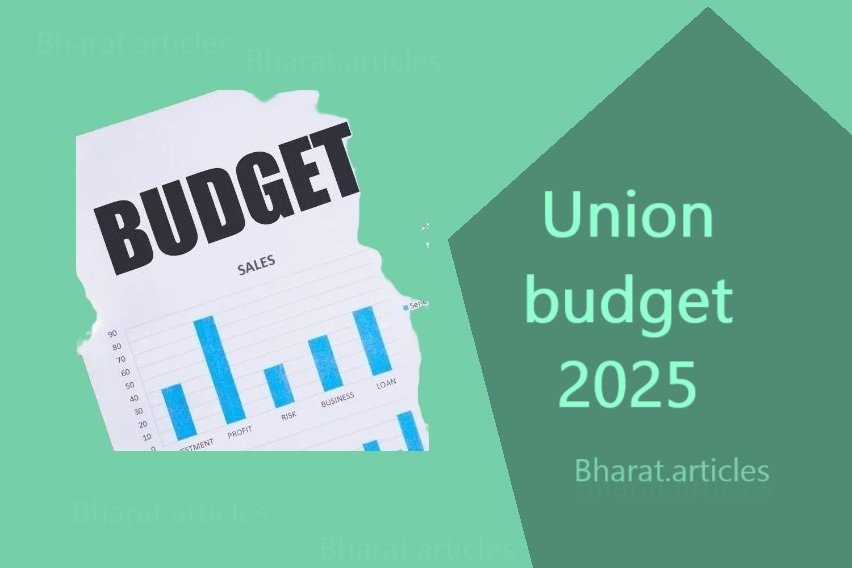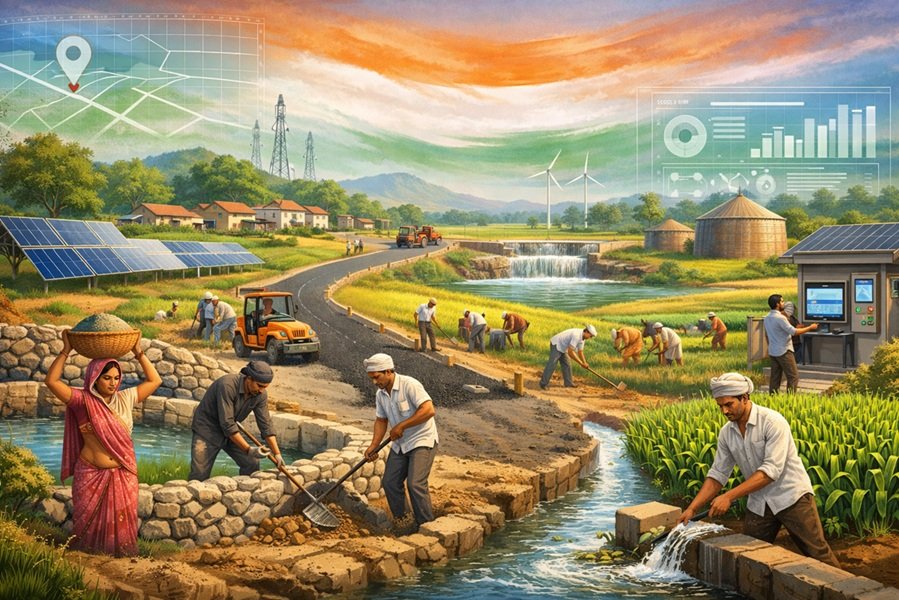
Union Budget 2025: A Comprehensive Overview in Simple Words
On February 1, 2025, Finance Minister Nirmala Sitharaman presented the Union Budget for the year. This budget has been hailed as a major step forward for the middle class and the Indian economy. It introduces significant changes in taxation, infrastructure funding, and sectoral reforms to benefit salaried individuals, businesses, and the overall economy. Let’s break it all down into simple terms.
Key Highlights of the Union Budget 2025
1. Income Tax Relief
- No income tax will be charged on earnings up to ₹12 lakh under the new tax regime. This is a huge jump from the previous limit of ₹7 lakh. It means many people will save more money and have more to spend. Salaried individual get benefit of standard deduction of ₹75000 also.
- A new standard deduction of ₹75,000 has been introduced, further reducing the taxable income for salaried individuals.
2. Fiscal Deficit
- The government has set the fiscal deficit (the gap between what it earns and spends) at 4.8% for FY25 and expects to lower it to 4.4% by FY26. This indicates the government’s focus on managing its finances responsibly.
3. Infrastructure Boost
- ₹1.5 lakh crore has been allocated as 50-year interest-free loans to states. This money will be used for infrastructure projects like roads, bridges, and public facilities, which can create jobs and improve the quality of life.
Tax Changes Benefiting the Public
Higher TDS Thresholds
- For senior citizens, the threshold for Tax Deducted at Source (TDS) has been doubled from ₹50,000 to ₹1 lakh. This means less tax deduction on their pensions or interest earnings.
- For rental income, the TDS threshold has been raised from ₹2.4 lakh to ₹6 lakh, which benefits landlords and tenants alike.
Ease in International Transactions
- The Tax Collected at Source (TCS) limit for sending money abroad under the Liberalized Remittance Scheme (LRS) has been raised from ₹7 lakh to ₹10 lakh. This change makes international remittances easier.
- For students, education loans up to ₹10 lakh from recognized financial institutions will no longer attract TCS. This makes financing higher education abroad more affordable.
What’s Cheaper, What’s Costlier?
Cheaper
- Healthcare: Essential medicines for cancer and chronic diseases are now more affordable.
- Electronics: Reduced import duties on mobile phone batteries and EV batteries mean lower prices for electronic items.
- Green Energy: Lower duties on materials like cobalt powder and lithium-ion battery scrap will promote sustainable energy use.
- Leather Products: Jackets, shoes, and belts will cost less due to tax cuts.
Costlier
- Flat Panel Displays: TVs and monitors might see a price hike due to increased import duties.
- Knitted Fabrics: Clothes made from knitted fabrics are likely to become more expensive.
Sector-Wise Reforms
1. Agriculture
- Dhan Dhanya Krishi Yojana aims to help farmers in 100 low-productivity districts. About 1.7 crore farmers will receive targeted support.
- A mission for edible oils and seeds will reduce the need to import these items, boosting self-reliance.
- A dedicated Makhana Board in Bihar will promote better processing and marketing of makhana (fox nuts).
2. MSMEs (Micro, Small, and Medium Enterprises)
- Classification limits have been raised, allowing more businesses to qualify for benefits.
- A new Fund of Funds (FoF) with ₹10,000 crore will help small businesses get easier access to loans.
- A special credit card for micro-enterprises will be introduced to improve credit availability.
3. Artificial Intelligence (AI)
- Three new AI research centers will be established with ₹500 crore funding to boost innovation in AI technologies, making India a leader in this field.
4. Gig Workers
- Nearly 1 crore gig workers, such as delivery agents and freelancers, will receive social security benefits, including healthcare. This move aims to improve job stability and quality of life for these workers.
5. Jal Jeevan Mission
- The mission has been extended to 2028, with a focus on providing tap water to 15 crore households. This improves access to clean drinking water and strengthens rural infrastructure.
6. Nuclear Energy
- A ₹20,000 crore plan for Small Modular Atomic Reactors has been announced, targeting the generation of 100 GW of nuclear energy. This supports India’s clean energy goals.
7. Investment Reforms
- The Bilateral Investment Treaty (BIT) is being revamped to attract more foreign investments, making India a more investor-friendly country.
8. Medical Education
- Over 10,000 new medical seats will be added this year as part of a plan to introduce 75,000 seats over the next five years. This will improve the doctor-patient ratio and expand access to medical education.
9. UDAN (Air Travel Scheme)
- The UDAN scheme, which connects smaller cities by air, will be expanded to 120 new destinations, making air travel cheaper and more accessible.
10. Maritime Sector
- A ₹25,000 crore Maritime Development Fund will support India’s shipbuilding industry. Shipbuilding clusters will also be developed to boost domestic manufacturing.
Budget’s Impact on the Stock Market
The budget has created positive vibes in the stock market. However, investors are advised to carefully analyze the implications of sector-specific announcements and focus on long-term opportunities rather than reacting to short-term market changes.
Conclusion
The Union Budget 2025 is a forward-looking plan aimed at empowering the middle class, boosting infrastructure, and positioning India as a leader in technology and green energy. By addressing the needs of various sectors and individuals, the budget lays the groundwork for a stronger and more inclusive economy. It’s now up to businesses, investors, and citizens to make the most of these opportunities.
Source: Budget Speech as on 01st February 2025 & https://www.indiabudget.gov.in/





